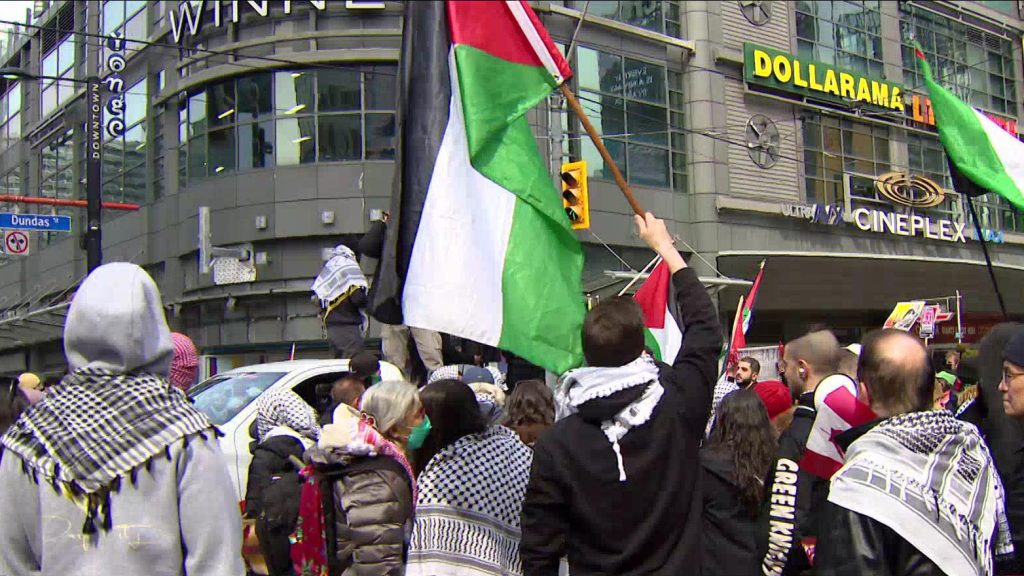Mandela colleague thanks Canada for help building post-apartheid government
Posted December 8, 2013 12:22 pm.
This article is more than 5 years old.
They were a government in waiting — ready to follow their fearless, newly freed leader, Nelson Mandela — except for one major problem.
None of the heady, young members of the African National Congress had any idea how to actually govern a country. Within a few years in the early 1990s, all that would change, thanks to a major training effort by Canada’s International Development Research Centre.
In 1994, when Mandela was sworn in as South Africa’s first democratically elected president, 18 cabinet ministers stood with him — 10 had been Canadian-trained.
“The IDRC was an amazing help to us in shaping the policy environment of the post-apartheid South Africa,” said Jay Naidoo, a leading South African trade unionist who would serve Mandela in several cabinet portfolios, including reconstruction and development and broadcasting.
Canada’s pre-1990s efforts, led by former prime minister Brian Mulroney, to help topple South Africa’s apartheid regime are well known: steadfast political support and sanctions that culminated in Mandela’s release from prison after 27 years.
But Canada played a crucial role in the next phase of South Africa’s collective march to democracy — shedding the vestiges of racist white rule and making Mandela their first democratically elected president in 1994.
During that four-year period, the Canadian Crown corporation helped transform a generation of accomplished ANC freedom fighters into competent public administrators. The training ran the gamut from economic policy, urban migration, heath, women’s rights and HIV.
During that time, Naidoo said Canada offered understanding and support, without trying to “impose a policy agenda on us.”
“My relationship with the IDRC was immeasurably strengthened in the difficult period of transition post the Mandela release when they opened an office here,” Naidoo told The Canadian Press in an exchange of emails.
“When I became the minister of communications under Mandela in 1996, IDRC was a key partner in driving my strategy of closing the digital divide,” he added.
“In that period Canada was a trusted partner of the South Africa liberation movement.”
Mandela himself has specifically recognized that particular Canadian contribution.
In a 1995 letter to the IDCR on its 25th anniversary, Mandela thanked the IDRC for the “critical role” it played in “helping us prepare for the new phase of governance and transformation.”
When he addressed Parliament on his second of three visits to Canada in 1998 — his first as an elected president — Mandela once again thanked the organization and the Canadian International Development Agency.
“Critical areas affecting transformation have benefited, including science and technology; places of learning; our labour laws and our courts,” Mandela said.
Keith Bezanson, the IDRC’s then president, said the work was important because many in Mandela’s circle were consumed with revenge and settling scores.
Up until then, all the levers of power, all the institutions of government had been controlled by white hands.
With the help of Canadian training and education, that changed.
“It was humbling,” Bezanson recalled Friday in an interview.
“We were coming out on the right side of history. Things were happening, and if it worked, we were going to have done what we were set up to do, which was to bring about development.”
Canadians can pay tribute to Mandela, who died Thursday at 95, by signing an online book of condolences at www.commemoration.gc.ca.
Prime Minister Stephen Harper signed a paper copy of the book Friday on Parliament Hill, saying in a handwritten note that Mandela lived a life for the ages.
Harper is to travel to South Africa this weekend to pay tribute to Mandela, who was granted honorary Canadian citizenship in 2001, on this third and final trip here. Harper has extended an invitation to former Canadian prime ministers to travel on his plane, but the details of that won’t be confirmed until Saturday.
Though Bezanson spent much time with some of Mandela’s closest power brokers, his only meeting with Madiba himself came in early 1992 when he was summoned for a two-hour meeting over tea.
Mandela was closely guarded then because of fears of assassination, Bezanson said.
During that time, he got to ask Mandela the question that so many are asking again today: where did he find the strength to turn the other cheek?
“He said, ‘If we go down that road it will be catastrophic. It will be disaster. It will be blood, upon blood upon blood,'” said Bezanson.
Bezanson pushed Mandela. How could he feel that way after 27 years in prison?
“It’s not that I’m Christian or godly,” he recalled Mandela telling him. “I’m just a realist. It’s the only path forward. All other paths are destined to fail. So don’t call me saintly. Just credit me with being a realist.”
Added Bezanson:
“That left an indelible impression on me, that I carry to this day.”










